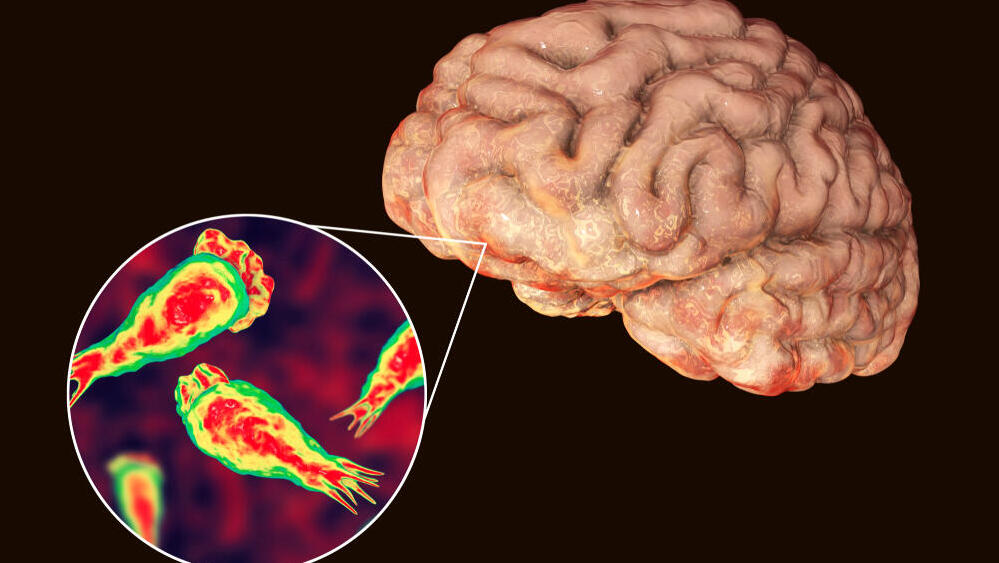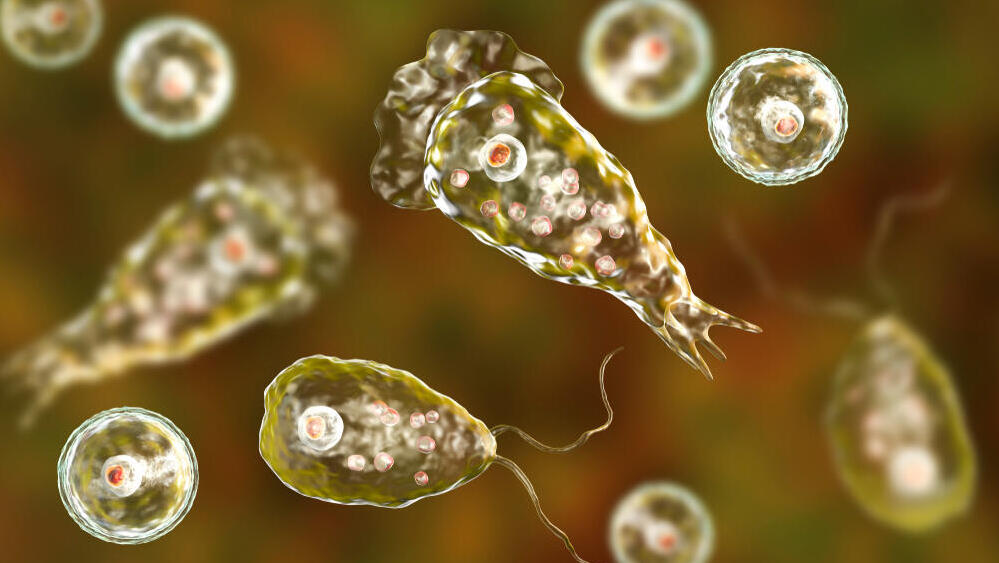Getting your Trinity Audio player ready...
A 25-year-old man is in serious condition at the Rabin Medical Center in Petah Tikva after being diagnosed with a brain infection caused by Naegleria fowleri, a rare amoeba, also known as the "brain-eating amoeba," Ynet learned on Thursday.
This amoeba, primarily found in freshwater, enters the brain through the nasal cavity. The Health Ministry has indicated that the young man likely contracted the deadly amoeba at Guy Beach in the Sea of Galilee and that his life is at risk.
According to the Health Ministry, "A 25-year-old man from the Central District, with no preexisting conditions, has developed a brain infection from a rare amoeba. He is in life-threatening condition in the intensive care unit."
"Around 400 cases have been reported worldwide, as this a rare disease with a high mortality rate. The amoeba is found in freshwater, puddles, or various types of standing water. An investigation by the Central District Health Office of the Health Ministry suggests that the man was infected at the Sea of Galilee. The Health Ministry is investigating the matter and has sent environmental health inspectors to test the water. The public will be updated as necessary."
Exposure to the amoeba can cause a fatal brain infection, which often leads to death. The amoeba enters the human body through the nose, directly reaching the brain. While there is no specific treatment for the amoeba, a combination of medications can, in some cases, reduce brain damage.
According to the U.S. Centers for Disease Control and Prevention (CDC), infection from Naegleria fowleri usually occurs during swimming or diving in warm freshwater. Infection can occur by inhaling contaminated water droplets, such as when swimming in lakes or ponds where the amoeba is present, or by inhaling water spray from puddles.
The amoeba does not survive in saltwater or chlorinated water, and it cannot be contracted through drinking. The disease is considered rare, with low chances of recovery. Symptoms include fever, nausea, vomiting, headaches, and a stiff neck. Most infected individuals die within a week.




